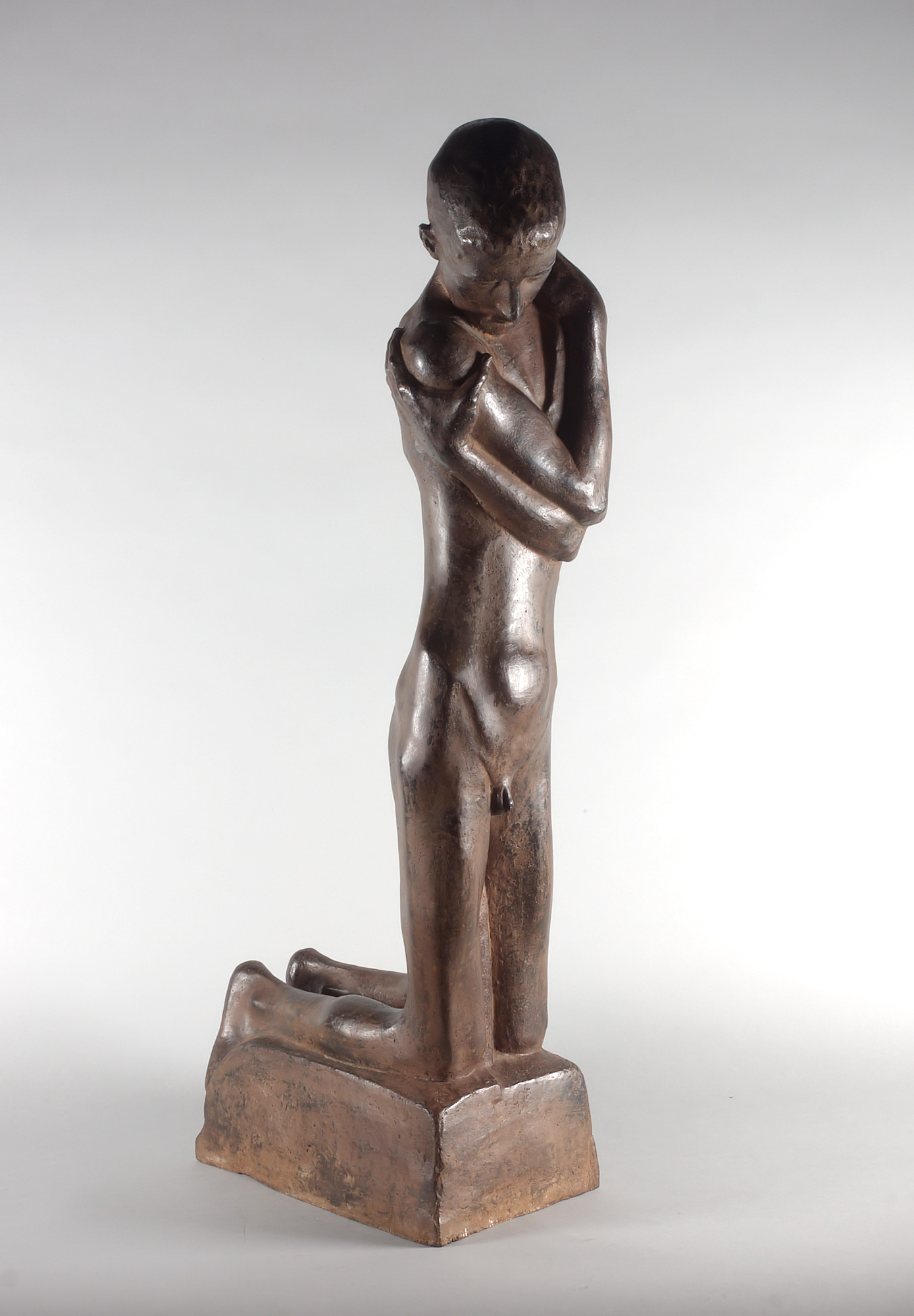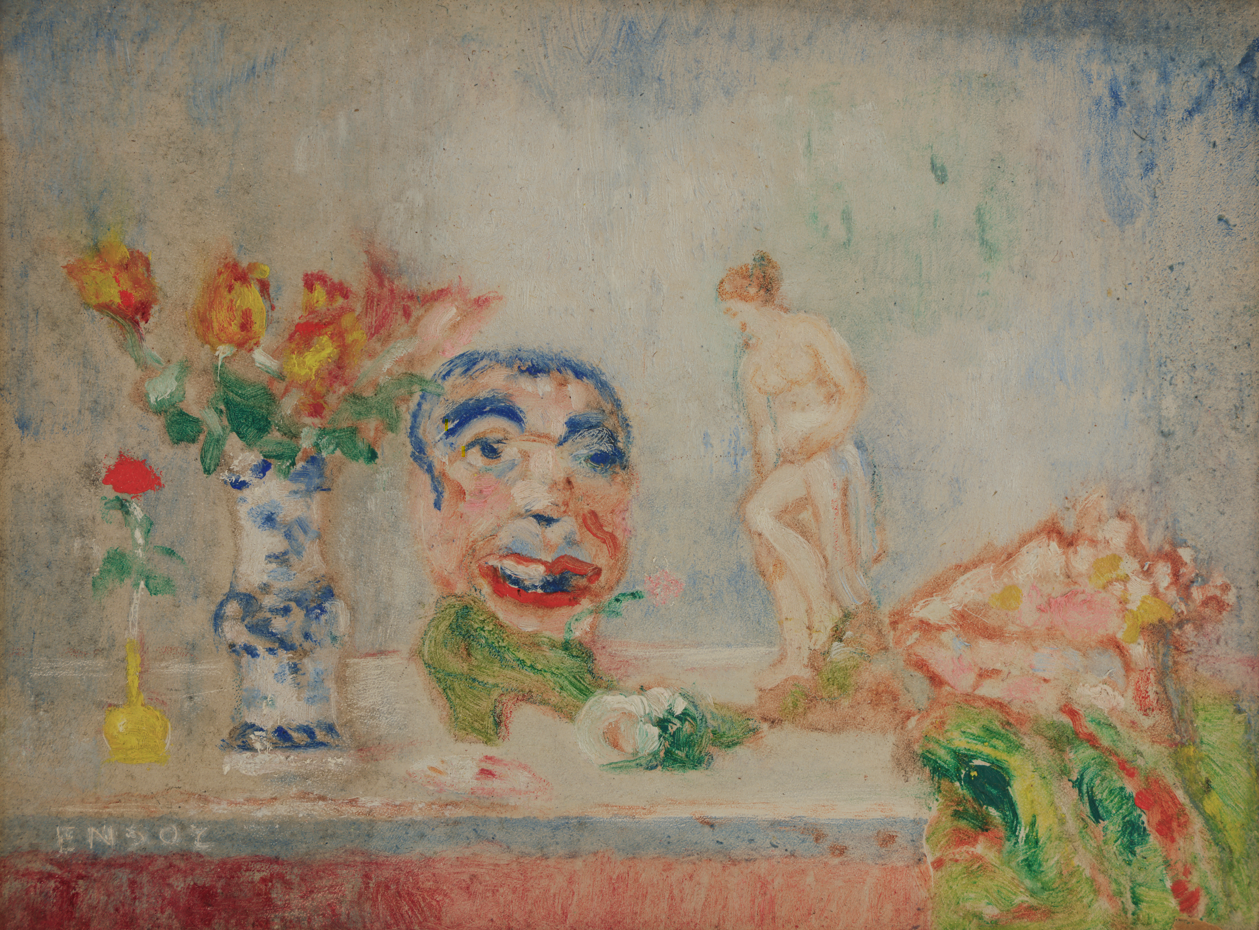

- From: 21 february 2026
- Through: 20 september 2026
- Location: Museum de Fundatie
Umbild - Jules van Hulst & Wieger Steenhuis
Using digital techniques in the form of media installations, Jules van Hulst and Wieger Steenhuis create a new world in Umbild. Three works from the Fundatie Collection form the starting point for their research into how new techniques can be used to give existing, old works of art different or additional meanings through representation. Van Hulst and Steenhuis spent a year experimenting with this concept as part of a master's programme at the VAKTOR creative hub. In this project, they are re-presenting the three works from the museum collection, but now in the form of various media installations. These are works by Flemish symbolists: George Minne, James Ensor and Valerius de Saedeleer. The focus on symbolism is deliberate: the symbolists also sought deeper and new meanings and to open up new worlds.
Umbild is the result of a year of research and experimentation. Van Hulst and Steenhuis present an exhibition as an experience. They use contemporary means to build a different or deeper understanding of older works of art. Mixing digital techniques and art is a challenge; how do you do this in such a way that no artistic value is lost? Can you represent existing works without committing plagiarism?
The title Umbild is a German word that refers to changing or transforming an image. The title thus symbolises the experimental nature of this exhibition, in which different forms intermingle. And in which you are sometimes a visitor and sometimes a participant.
For the Symbolists, Charles Baudelaire's 1857 poetry collection Les Fleurs du Mal (The Flowers of Evil) is an important starting point. In it, Baudelaire expresses the duality of human existence: the negative, heavy, melancholic side (called spleen by Baudelaire) versus the desire for the perfect (called the ideal by Baudelaire). This conflict also recurs in the media installations of Van Hulst and Steenhuis – how do you reconcile spleen and ideal? They too use the senses to convey deeper meanings and allow form and content to merge. In various works in Umbild, Van Hulst and Steenhuis explore the (im)possibilities of combining digital techniques and art.
Jules van Hulst (Nijmegen, NL, 1984) is a visual artist. He creates videos, performances, installations and poetry films. Based on a deep-rooted doubt about his own existence, Van Hulst often deals with mystical themes. His work, which at first glance appears very detached, is characterised by gently tampering with what seems natural or realistic. Van Hulst's various media productions are shown from New York to Zwolle, formerly within the 33 1/3 Collective. Since 2018, he has mainly sought to connect with poetry in his work. In line with media arts, Van Hulst is active as a moderator of artist talks and as a director.
Wieger Steenhuis (Emmen, NL, 1982) is a designer and developer. He specialises in interactive installations and real-time computer graphics. He works as a digital scenographer and developer of specialised software within the performing arts. In his work, he uses techniques such as 3D modelling, game engines and extended reality (XR), with a focus on researching and applying mixed reality within the collective experience, as opposed to the solo experience.
Steenhuis has contributed to various operas, theatre performances and films, including the installation DANS DANS REVOLUTIE (Lisa Weeda, BrotherTill, 2024), which was nominated for a Golden Calf and won the Designers' Award at the Dutch Theatre Festival in 2025.
George Minne, Kneeling Youth at the Fountain, 1898
For many years, George Minne explored the theme of the kneeling, introverted boy. In doing so, he strove for maximum expression with minimal means. Kneeling Youth at the Fountain is the culmination of his quest for clean lines and clear design. The Flemish sculptor did not strive for anatomical correctness. The boy appears elongated and his head and hands seem too large for his slight body. The bowed head and arms folded in front of the chest lend the sculpture a mystical and somewhat ascetic character. Kneeling Youth at the Fountain is Minne's best-known sculpture. He made variations in plaster, bronze and marble. Commissioned by a German collector, he also created a group of five identical kneeling figures on the edge of a circular basin. A marble version of this Fountain of Kneeling Men is in the Museum Folkwang in Essen.
 George Minne, Kneeling Youth at the Fountain, 1898
George Minne, Kneeling Youth at the Fountain, 1898
James Ensor, Bibelots, 1935
James Ensor's work is difficult to categorise; for convenience's sake, his oeuvre is often classified as symbolism, but he is also referred to as both the first Belgian impressionist and the precursor of the Belgian expressionists. His still life Bibelots is one of the smallest works in the Fundatie Collection. Ensor paints a collection of worthless objects in his characteristic light colours, emphasising the vanity of mankind.
 James Ensor - Bibelots, 1935
James Ensor - Bibelots, 1935
Valerius de Saedeleer, Landscape in Wales, 1917
Together with George Minne and others, Valerius de Saedeleer settled in the village of Sint-Martens-Latem on the Leie from 1898 to 1904. Along with a number of other artists, they sought tranquillity, peace and nature at the height of industrialisation. De Saedeleer was strongly influenced by the work of Pieter Bruegel the Elder (c. 1525-1569). Combined with a deep connection to nature, he painted vast, open and panoramic landscapes. During the First World War, De Saedeleer fled to Wales. This painting was created there.
 Valerius de Saedeleer - Landcape in Wales, 1917
Valerius de Saedeleer - Landcape in Wales, 1917
- From: 21 Feb 2026
- Through: 20 Sep 2026
- Location: Museum de Fundatie
Also check these exhibitions
-
Sculpture garden
.png)
near Kasteel het Nijenhuis
Kasteel Het Nijenhuis -
Fundatie Collection: REMIX
.png)
New perspectives in the castle
Kasteel Het Nijenhuis -
At Home With Ter Borch
.png)
A Family of Artists in Zwolle
Museum de Fundatie -
Ivna Esajas
.png)
In The Garden of My Good Days
Museum de Fundatie -
Speaking Heads
.png)
Charlotte van Pallandt
Kasteel Het Nijenhuis -
Chourouk Hriech
.png)
In 17th Heaven
Museum de Fundatie -
Modernism from the Fundatie Collection
.png)
Van Gogh to Picasso
Museum de Fundatie